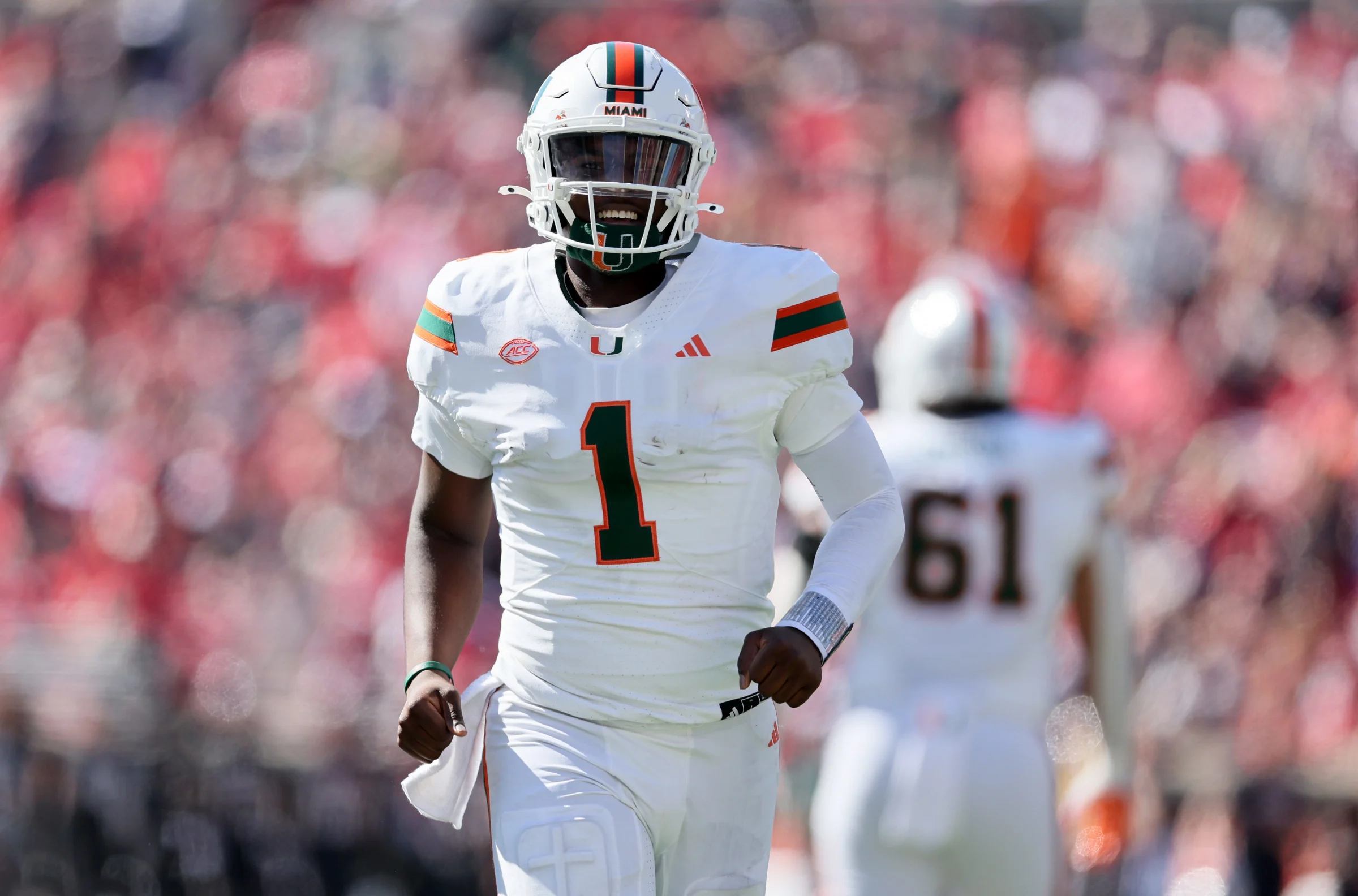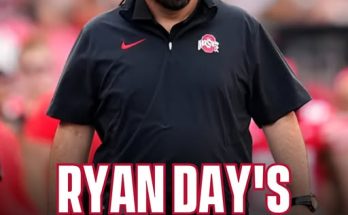The College Football Playoff rankings are among the most anticipated events in the sport each season, and for programs like the Miami Hurricanes, they represent not only a measure of current success but also a roadmap to national relevance. As the college football landscape continues to shift with realignment, NIL, and expanded postseason implications, the release of each CFP ranking has become a pivotal moment in the calendar. For Miami, the stakes are high, and understanding the significance of these rankings is crucial in evaluating where the program stands—and where it might go.
The CFP rankings begin to roll out mid-season, typically around the start of November, and continue weekly until the final selections are announced in early December. These rankings are determined by the College Football Playoff selection committee, which is composed of 13 members that include athletic directors, former coaches, administrators, and other stakeholders within college football. Their job is to assess and rank the top 25 teams in the nation based on a combination of factors, including strength of schedule, head-to-head results, championships won, and performance against common opponents. Unlike the AP Poll or Coaches Poll, which are media- and coach-driven, the CFP rankings are the only ones that officially determine the playoff participants.
For the Miami Hurricanes, a return to the top tier of the CFP rankings would be monumental. Miami has not seriously contended for a national championship since the early 2000s, when the program was a perennial powerhouse and a staple in the national championship conversation. While there have been flashes of brilliance since then, including an Orange Bowl appearance in 2017 under Mark Richt, consistency and elite-level performance have largely eluded the Hurricanes. The release of each CFP ranking provides a litmus test of how Miami’s progress is being viewed nationally, particularly in an era where perception plays a crucial role in playoff consideration.
The first CFP rankings are always revealing. They offer insight into what the committee values in a given season. For example, in some years, strength of schedule has outweighed an undefeated record, while in others, head-to-head victories have carried more weight than conference titles. For Miami, the path to inclusion in the top 10—or eventually, the top four—starts with winning games convincingly, particularly against ranked opponents. The ACC schedule doesn’t always afford the same gauntlet of top-tier opponents as the SEC or Big Ten, which means each opportunity against a ranked non-conference team or a high-profile conference matchup carries added significance.
Miami’s non-conference scheduling philosophy also plays a role in their CFP trajectory. Games against Power Five opponents—especially ones with strong reputations—can bolster a resume quickly. Wins over SEC or Big Ten teams, in particular, tend to resonate with the committee. Conversely, a non-conference slate filled with Group of Five or FCS opponents can be a detriment, particularly if Miami doesn’t dominate those games. The Hurricanes have occasionally scheduled tough out-of-conference matchups, and continuing to do so will only help their cause when the committee convenes each week to dissect resumes.
In the expanded 12-team playoff format coming in the near future, the importance of being highly ranked grows even further. While the top four teams still receive a first-round bye, teams ranked 5-12 will square off in on-campus matchups in the first round. That means a team like Miami doesn’t necessarily have to be perfect to make the playoff—they just have to be consistently strong and positioned well by the committee. This shift gives a program like Miami a realistic opportunity to play meaningful postseason football even if they suffer a loss or two along the way.
That said, the Hurricanes need to focus on building the kind of team that impresses the CFP committee in multiple ways. That starts with quarterback play, which has historically been a hallmark of successful Miami teams. From Bernie Kosar and Vinny Testaverde to Ken Dorsey, elite quarterback play has often been a bellwether for national success in Coral Gables. In recent years, inconsistency under center has plagued the Hurricanes, and improving in that department will be essential in climbing the rankings.
Beyond the quarterback, Miami’s success in the CFP rankings will hinge on defensive dominance and offensive efficiency. The committee values teams that control games, minimize mistakes, and display a high level of execution. The Hurricanes have traditionally been known for their aggressive, turnover-hungry defenses, but maintaining that identity while complementing it with a high-powered offense is what modern playoff teams tend to look like. Georgia, Alabama, and Ohio State have all built programs on the back of elite defenses that support explosive playmakers on offense. Miami must strive to replicate that formula.
Recruiting also plays an indirect but significant role in how the CFP committee views programs. While the rankings themselves are not based on recruiting rankings, the caliber of talent on a roster affects performance, depth, and ultimately, outcomes. Mario Cristobal and his staff have made recruiting a priority, and their success in landing top classes could eventually translate into better on-field results. When the committee sees a team full of five- and four-star players performing at a high level, it reinforces the perception of legitimacy and competitiveness.
Another key factor in Miami’s CFP rankings journey is the timing of wins and losses. Late-season momentum often sways the committee, particularly when teams peak in November and win their conference championships in convincing fashion. Early losses can sometimes be forgiven if a team finishes strong and demonstrates improvement. For Miami, managing the schedule and peaking at the right time could mean the difference between being ranked No. 13 and being ranked No. 6. The final impression a team leaves on the committee matters deeply.
Conference championships are also a significant criterion. While the committee has occasionally placed non-champions into the playoff (notably Alabama in 2017), winning a conference title provides a boost in credibility. Miami has yet to win an ACC championship since joining the conference, and that drought is something that must end if the Hurricanes are to be taken seriously as a playoff threat. Beating Florida State or Clemson in the ACC title game would not only elevate the program’s status nationally but also serve as a crowning achievement that would be hard for the committee to ignore.
Perhaps most importantly, the intangibles—how a team plays in big moments, their resilience in tough environments, and their ability to rise to the occasion—matter. These qualities are harder to quantify, but they show up on tape and in the eyes of committee members. Miami has long been known for swagger, but transforming that into substance and discipline on the field is how reputations are rebuilt. The CFP rankings are as much about how a team wins as they are about the wins themselves.
In the broader context, every CFP ranking release becomes a national conversation. Social media debates erupt, fan bases celebrate or fume, and analysts pore over the logic of the committee’s decisions. For Miami fans, seeing the Hurricanes climb the rankings again would ignite a long-dormant passion. It would signal that “The U” is truly back—not just in the hearts of fans, but in the eyes of college football’s most important decision-makers.
Miami’s journey through the CFP rankings will not happen overnight. It requires consistent excellence, smart scheduling, player development, and a bit of luck. Injuries, weather, officiating, and the unpredictable nature of college football can all affect a team’s ranking from week to week. But the foundation is being laid. With a renewed emphasis on recruiting, infrastructure, and culture, Miami is positioning itself to re-enter the national conversation in a meaningful way.
So when the CFP rankings are released each week, don’t just look at the numbers. Look at the trends. Look at who Miami is being compared to, how the narrative is shaping up, and where the gaps lie between perception and potential. The rankings are more than a snapshot—they’re a map. And for the Miami Hurricanes, the destination is clear: back to national relevance, back to championship contention, and back to being one of college football’s elite programs.
Every step up the rankings is a step toward that goal. Every committee meeting is another opportunity to prove the doubters wrong. For a fan base that has waited patiently—and sometimes impatiently—for a return to glory, the CFP rankings serve as both a measuring stick and a motivator. The Hurricanes may not be there yet, but if they can stay focused, play to their potential, and seize the moment when it comes, there’s no reason they can’t be one of the names the college football world debates deep into November and December.
After all, history has shown what Miami can do when everything clicks. The question now is whether the next chapter in that storied history will be written under the bright lights of the College Football Playoff. The rankings will tell us everything we need to know.



